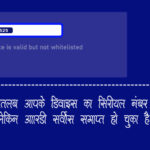DICGC Insured Banks List
When it comes to safeguarding our hard-earned money, it is essential to have a clear understanding of the financial institutions that protect our deposits. In India, the Deposit Insurance and Credit Guarantee Corporation (DICGC) plays a crucial role in insuring bank deposits. In this article, we will delve into the concept of DICGC insurance and provide you with a comprehensive list of DICGC insured banks, ensuring that you can make informed decisions about your banking needs.
What is DICGC Insurance?
DICGC stands for the Deposit Insurance and Credit Guarantee Corporation, a subsidiary of the Reserve Bank of India (RBI). It was established in 1961 to provide insurance protection to depositors and promote public confidence in the Indian banking system. DICGC insures all types of bank deposits, including savings accounts, fixed deposits, recurring deposits, and current deposits, up to a certain limit.
The Insurance Coverage Limit
The DICGC provides insurance coverage for each depositor up to a maximum of Rs. 5 lakh (rupees five lakh) per bank. It means that if you have multiple accounts in the same bank, the total insurance coverage for all your deposits in that bank would be capped at Rs. 5 lakh. It’s important to note that the coverage limit includes both the principal amount and the interest accrued.
DICGC Insured Banks
The DICGC insures deposits in all commercial banks, local area banks, regional rural banks, and co-operative banks. Here is a list of some prominent DICGC insured banks in India:
- State Bank of India (SBI)
- Punjab National Bank (PNB)
- ICICI Bank
- HDFC Bank
- Axis Bank
- Bank of Baroda
- Canara Bank
- Union Bank of India
- Kotak Mahindra Bank
- Yes Bank
- IndusInd Bank
- IDBI Bank
- Central Bank of India
- Bank of India
- Indian Overseas Bank
- And many more…
Please note that this list is not exhaustive, and there are several other banks in India that are DICGC insured. It’s always recommended to check with your bank or visit the DICGC website for the most up-to-date information regarding the insured status of a particular bank.
| Sr. No. | Categories | Number of Banks |
| 1 | Public Sector Banks | 12 |
| 2 | Private Sector Banks | 21 |
| 3 | Foreign Banks | 44 |
| 4 | Small Finance Banks | 12 |
| 5 | Payment Banks | 6 |
| 6 | Regional Rural Banks | 43 |
| 7 | Local Area Banks | 2 |
| 8 | State Co-operative banks | 33 |
| 9 | District Central Co-op banks | 352 |
| 10 | Urban Co-op banks | 1497 |
Related Articles
Benefits of DICGC Insurance:
- Financial Security: DICGC insurance provides depositors with a sense of financial security, knowing that their deposits are protected up to a certain limit.
- Prompt Reimbursement: In the event of a bank failure, DICGC ensures prompt reimbursement of insured deposits, reducing the potential financial loss for depositors.
- Maintaining Public Confidence: DICGC’s presence in the banking system helps maintain public confidence, ensuring the stability and reliability of the Indian banking sector.
Conclusion
As a responsible depositor, understanding the coverage provided by DICGC and the list of DICGC insured banks is crucial for the security of your hard-earned money. By being aware of the coverage limit and the banks included in the DICGC insurance program, you can make informed decisions when selecting a bank for your deposits. Remember, while DICGC insurance provides protection, it’s also essential to evaluate the financial health and reputation of the bank you choose. Always stay informed and updated to ensure the safety of your deposits.














